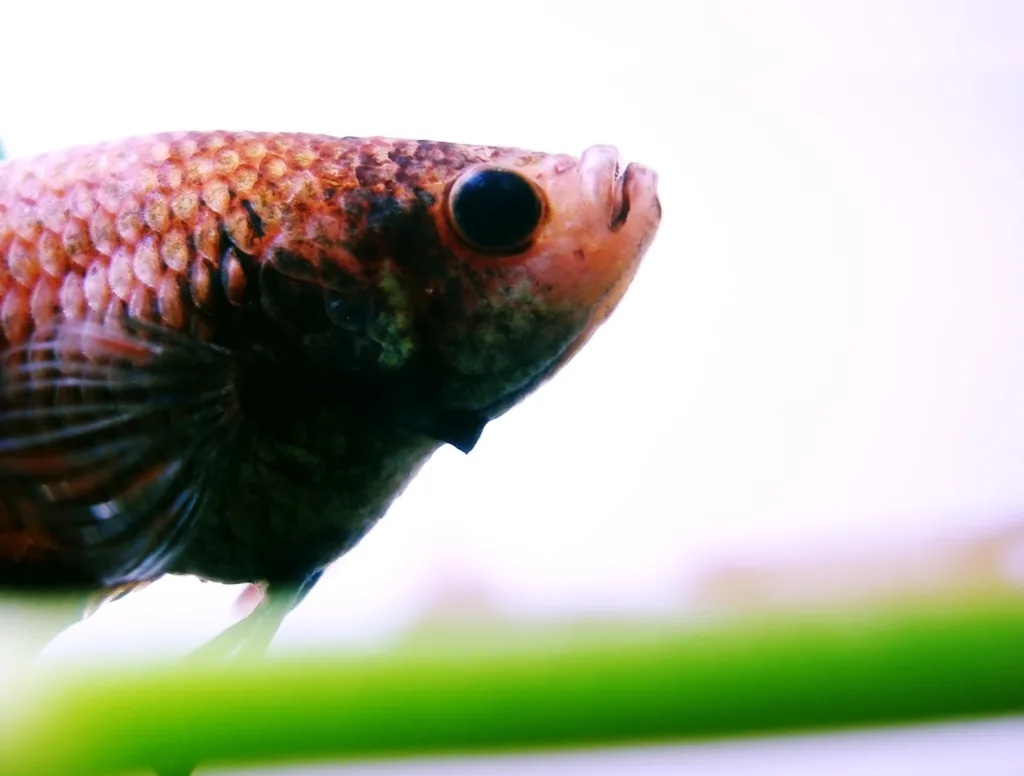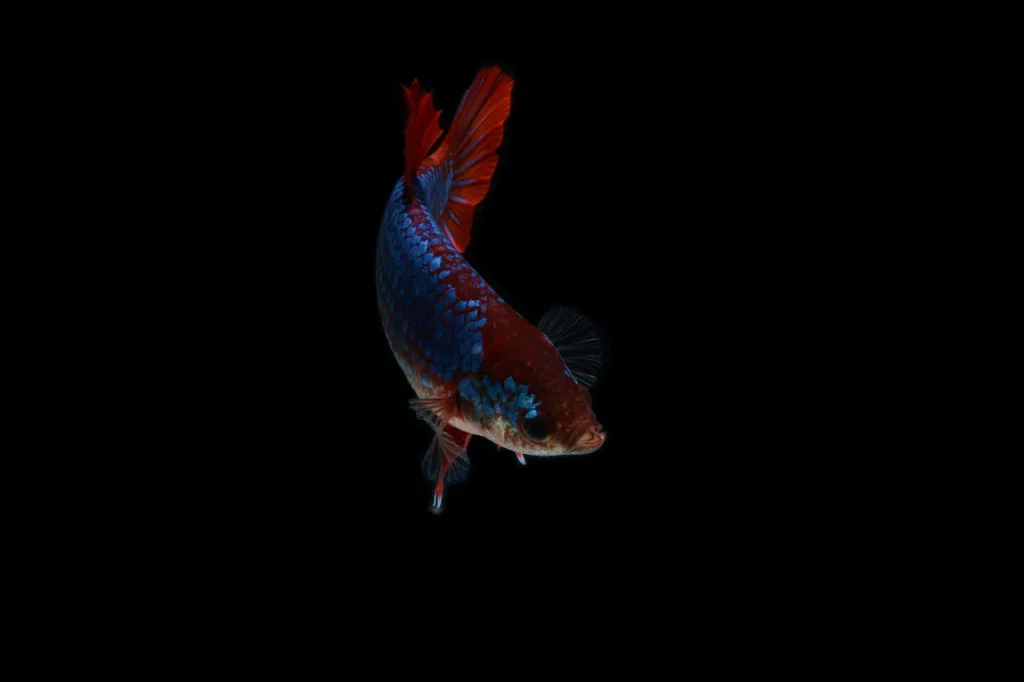Hey there, fellow fish enthusiast! 🐠 Ever found yourself gazing at your betta and pondering, “How do betta fish breathe?” Well, you’re not alone!
I used to watch my betta swim to the surface, take a little gulp, and think, “What’s going on there?” Turns out, these colorful little finned friends have a nifty trick up their sleeves.
They’ve got this amazing organ called the labyrinth, which lets them, believe it or not, breathe air like us land-dwellers! But hold onto your fishnets because that’s just the tip of the iceberg. Dive in with me as we unravel this underwater mystery.
I promise, by the end, you’ll be bubbling with excitement! Ready to set sail on this aquatic adventure?
How Do Betta Fish Breathe
Prepare to embark on an aquatic journey as we explore one of the most unique features of our beloved betta fish. The labyrinth organ might sound like a mysterious artifact from an Indiana Jones movie, but trust me, it’s even more intriguing!
Understanding the Labyrinth Organ: How does the labyrinth organ work
When you first hear about the labyrinth organ, it might seem like nature’s equivalent of a plot twist. This incredible organ is like a secret weapon for bettas, allowing them to thrive in diverse environments.
- Origin Story: The name “labyrinth” comes from the intricate maze-like structure of this organ. It’s not just a functional piece; it’s a work of art in the anatomy of the betta.
- Dual Respiration: While bettas, like other fish, have gills, the labyrinth organ gives them an additional method to obtain oxygen. It’s like having both a snorkel and an oxygen tank while diving!
Breath by Breath: The Labyrinth Process
- Surface Sip: Have you noticed your betta frequently skimming the surface? That’s them using their labyrinth organ. They take a quick gulp of air, and the magic begins.
- Oxygen Extraction: Inside the labyrinth, the inhaled air is processed, and oxygen is absorbed directly into the bloodstream. It’s nature’s way of ensuring the betta gets the oxygen it needs.
- The Release: As they absorb oxygen from the air, bettas expel carbon dioxide into the water. It’s a beautiful cycle of give and take with their environment.
Why the Labyrinth Organ is a Lifesaver
In their natural habitats, bettas often find themselves in waters that aren’t precisely five-star in terms of oxygen content. We’re talking about stagnant puddles, slow-moving streams, and shallow rice paddies.
- Survival Mode: The labyrinth organ is like an emergency backup system. When underwater oxygen levels drop, bettas can rely on atmospheric oxygen to survive.
- Evolutionary Advantage: This organ has given bettas an evolutionary edge, enabling them to populate various environments that might be challenging for other fish.
The labyrinth organ showcases the remarkable adaptability of betta fish. It’s not just about surviving but thriving, regardless of the circumstances. So, the next time you see your betta taking a quick sip of air, you’ll appreciate the marvelous mechanism at work.

Differences between betta fish breathing and other fishes
So, after diving deep into the wonders of the labyrinth organ, you’ve learned how betta fish breathe
with their unique ability. But what about other fishes? Do they have their own breathing tricks up their fins? Let’s take a closer look and understand the contrasts.
The Standard Fish Breathing Mechanism: Gills Galore
- Nature’s Filtration System: Most fish breathe the traditional way, relying solely on gills. Think of these gills as nature’s sophisticated underwater respirators.
- Oxygen-Rich Water: As water, packed with oxygen, flows over the gills, oxygen is taken in and absorbed into the bloodstream. In return, carbon dioxide gets waved goodbye and expelled back into the water.
- Dependency on Water Quality: Oxygen content in the water is the make-or-break factor for these fish. If those levels dip too low, it spells trouble.
Betta Breathing: Dual Mode Activated
- The Best of Both Worlds: While pondering how betta fish breathe
- , it’s worth noting their dual-respiratory gift. With the labyrinth organ in its arsenal, bettas can take oxygen from water and the atmosphere above.
- Adaptable to Changing Waters: Those stagnant puddles and slow-moving streams? Not a problem for bettas. If the water’s oxygen content gets a little low, they pop up and breathe from the surface.
- Stress Minimized: This air-breathing capability means bettas can be more relaxed in diverse water conditions, making them more resilient than many fishy peers.
Wrap Up
Fish are fascinating, aren’t they? While all fish species are intriguing in their unique ways, bettas hold a special place with their extraordinary breathing duality. Next time you’re watching your betta and someone asks, “How do betta fish breathe?” you’ve got a story to tell!
Proper Tank Conditions for Betta Fish Oxygen Exchange
You might think, “With the betta’s dual-breathing talent, any tank setup should work, right?” Well, not quite! While bettas are incredibly adaptable, ensuring the right tank conditions will help your finned friend thrive and easily breathe. So, how do betta fish breathe comfortably in an aquarium setting? Let’s get into it.
Size Matters: Optimum Tank Volume
- Minimum Capacity: A common misconception is that bettas are okay in tiny bowls because they can gulp air. Nope! They need space to swim and thrive. A minimum of 5 gallons is recommended.
- Stretch Those Fins: Larger tanks offer more room for exploration and help maintain a stable environment, making it easier for bettas to breathe and reduce stress.
Water Quality: The Breathable Element
- Oxygen-Rich Waters: Even though bettas can breathe atmospheric oxygen, maintaining water with a good oxygen content is still crucial. It promotes overall health and well-being.
- Regular Water Changes: Fresh water means more dissolved oxygen. Change about 25% of the tank water weekly to ensure a clean environment.
- Avoid Overcrowding: Too many fish or decor can deplete oxygen levels and produce excessive waste. Give your betta ample room to breathe and swim.
Surface Access: Gateway to Atmospheric Oxygen
- Unobstructed Surface: Since bettas use their labyrinth organ to gulp air, ensure that nothing obstructs their access to the water’s surface.
- Avoid Tight Lids: If you’re using a lid or cover, ensure there’s air exchange space. Tight lids can trap stale air and make it challenging for bettas to breathe naturally.
Temperature & Filtration: Unsung Heroes
- Stable Warm Temperatures: Betta fish prefer temperatures between 75°F and 80°F. Warm water supports better oxygen exchange.
- Gentle Filtration: Strong currents can stress bettas and interfere with their natural breathing rhythm. Opt for filters designed for betta tanks or adjust the flow rate to be gentle.
Plants: Natural Oxygenators
- Live Plants: Introducing plants like Anubias or Java Fern can help increase the oxygen content. Plus, they absorb carbon dioxide and provide natural hideouts for bettas.
- Avoid Overplanting: While plants are beneficial, ensure they don’t overcrowd the tank or block access to the surface.
The answer to the question, “How do betta fish breathe in tanks?” lies in the balance. Creating an environment that supports their gill and labyrinth organ function sets the stage for a happy, healthy betta. Here’s to many blissful bubbles and satisfied surface gulps!

How often do betta fish come to the surface to breathe?
Have you ever found yourself staring at your betta and thinking, “How often does this little guy come up for air?” It’s a captivating sight, right? Let’s unravel this aspect of the betta’s breathing pattern.
Bettas’ Natural Breathing Rhythm
- Regular Surface Visits: Betta fish typically come to the surface every few minutes to take a gulp of air, but this can vary based on several factors.
- Not Just for Oxygen: While it’s essential to their breathing, these surface trips aren’t solely for oxygen. They also help regulate and expel excess waste gases like ammonia from their systems.
Factors Influencing Breathing Frequency
- Activity Level: Like us, bettas require more oxygen when they are more active. You might notice more frequent trips to the surface during their busy periods.
- Water Quality: If the water quality dips or there’s less dissolved oxygen, bettas might surface more often to compensate. Always keep an eye on water conditions!
- Stress Factors: Environmental stress, be it from tank mates, water parameters, or other factors, can cause bettas to adjust their breathing patterns.
- Health: Sick bettas might breathe more rapidly or come to the surface more frequently. It’s essential to observe any drastic changes in their behavior.
Day vs. Night Patterns
- Daytime Activity: Bettas are more active during the day, so they’ll naturally come to the surface more during this time.
- Nighttime Rest: At night, while they rest, the frequency of their surface visits might decrease, but they still make occasional trips by air.
While bettas’ surface trips are both mesmerizing and essential, understanding their rhythm can offer insight into their well-being. If you’re wondering, “How often do betta fish come to the surface to breathe?” remember, there’s no strict schedule. But by observing and understanding the nuances of their behavior, you can ensure they’re in an environment where they can breathe easily, both underwater and above!
Importance of Air Access for Betta Fish in Aquariums
Ah, the sight of a betta gracefully swimming to the tank’s surface, taking a tiny gulp of air, and then diving back down. It’s almost poetic, isn’t it? But there’s more to this dance than meets the eye. Let’s explore why it’s paramount for bettas to have access to atmospheric air in their aquatic homes.
The Labyrinth Organ: A Quick Recap
- Nature’s Backup Plan: As discussed earlier, the labyrinth organ is a unique respiratory structure that allows bettas to extract oxygen directly from the air. It’s not just a quirky trait; it’s a survival mechanism.
- Balancing Act: While bettas can and do extract oxygen from water using their gills, this atmospheric air access complements and sometimes even compensates for underwater breathing, especially in less-than-ideal conditions.
Consequences of Restricted Air Access
- Stress and Discomfort: Not allowing bettas to reach the surface can stress them out. Prolonged stress can eventually weaken their immune system, making them more prone to diseases.
- Potential Drowning: It sounds ironic, but yes, betta fish can drown if they don’t have access to the surface. Even with their gills, they need supplemental oxygen from the air.
- Behavioral Changes: Bettas denied surface access and might display erratic behavior, like darting around anxiously or staying at the bottom, indicating discomfort or distress.
The Role of Tank Lids and Covers
- Safety First: While having a lid can prevent bettas from jumping out (they can be aggressive jumpers!), it’s vital to ensure the cover has adequate gaps or ventilation for air exchange.
- Material Matters: Mesh or grated covers can be an excellent choice. They prevent escape while ensuring bettas can easily reach the surface and breathe.
Aquarium Maintenance and Air Access
- Water Levels: While filling your tank to the brim might be tempting, always leave some space between the water’s surface and any tank cover. It makes it easier for bettas to access the air and reduces the risk of them feeling trapped.
- Tank Decor and Plants: Ensure decorations or plants keep the surface neat. Bettas should have clear, unobstructed pathways to the top.
Bettas’ need for atmospheric air isn’t just a quirk; it’s vital for their health and well-being. As aquarists, recognizing the importance of air access in betta fish aquariums can make a difference in providing a comfortable and natural environment. So, here’s to creating spaces where our finned friends can breathe easily in the water and above!
And that wraps up the significance of ensuring our bettas always have fresh air awaiting them at their tank’s surface!
